Input interpretation

1-bromo-3-methyl-2-butene
Chemical names and formulas
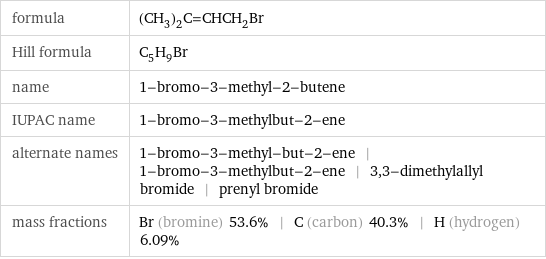
formula | (CH_3)_2C=CHCH_2Br Hill formula | C_5H_9Br name | 1-bromo-3-methyl-2-butene IUPAC name | 1-bromo-3-methylbut-2-ene alternate names | 1-bromo-3-methyl-but-2-ene | 1-bromo-3-methylbut-2-ene | 3, 3-dimethylallyl bromide | prenyl bromide mass fractions | Br (bromine) 53.6% | C (carbon) 40.3% | H (hydrogen) 6.09%
Lewis structure
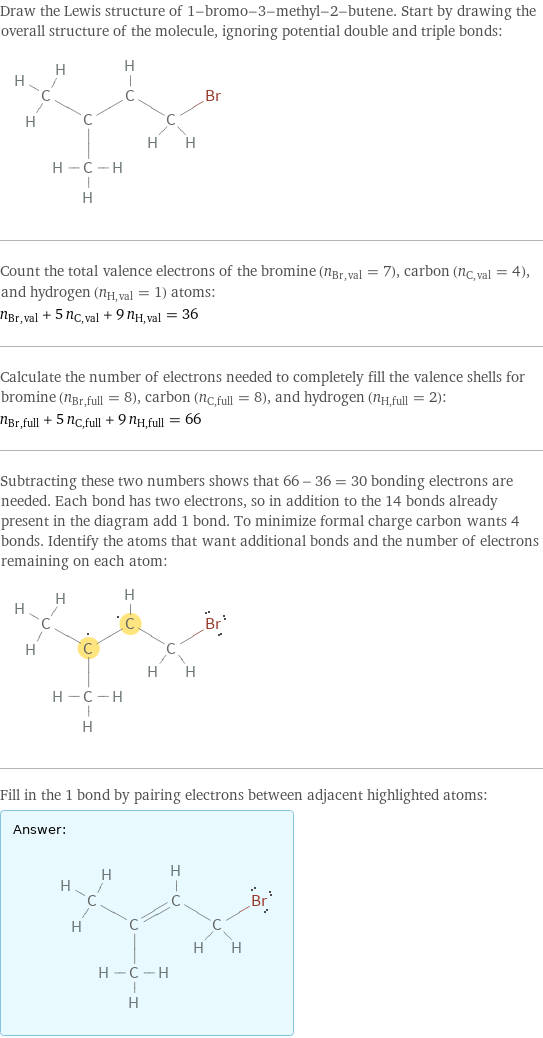
Draw the Lewis structure of 1-bromo-3-methyl-2-butene. Start by drawing the overall structure of the molecule, ignoring potential double and triple bonds: Count the total valence electrons of the bromine (n_Br, val = 7), carbon (n_C, val = 4), and hydrogen (n_H, val = 1) atoms: n_Br, val + 5 n_C, val + 9 n_H, val = 36 Calculate the number of electrons needed to completely fill the valence shells for bromine (n_Br, full = 8), carbon (n_C, full = 8), and hydrogen (n_H, full = 2): n_Br, full + 5 n_C, full + 9 n_H, full = 66 Subtracting these two numbers shows that 66 - 36 = 30 bonding electrons are needed. Each bond has two electrons, so in addition to the 14 bonds already present in the diagram add 1 bond. To minimize formal charge carbon wants 4 bonds. Identify the atoms that want additional bonds and the number of electrons remaining on each atom: Fill in the 1 bond by pairing electrons between adjacent highlighted atoms: Answer: | |
3D structure
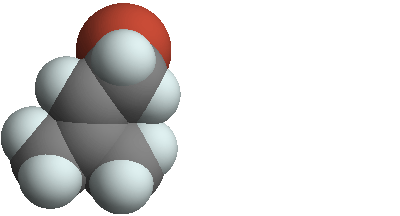
3D structure
Basic properties
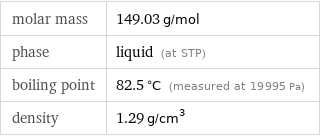
molar mass | 149.03 g/mol phase | liquid (at STP) boiling point | 82.5 °C (measured at 19995 Pa) density | 1.29 g/cm^3
Units

Liquid properties (at STP)

density | 1.29 g/cm^3 refractive index | 1.489
Units

Chemical identifiers
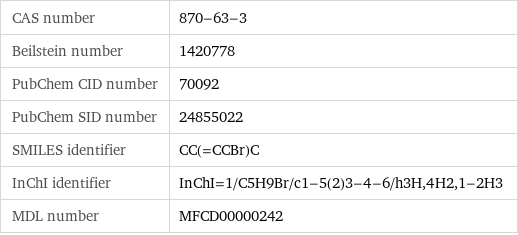
CAS number | 870-63-3 Beilstein number | 1420778 PubChem CID number | 70092 PubChem SID number | 24855022 SMILES identifier | CC(=CCBr)C InChI identifier | InChI=1/C5H9Br/c1-5(2)3-4-6/h3H, 4H2, 1-2H3 MDL number | MFCD00000242
NFPA label

NFPA label

NFPA health rating | 2 NFPA fire rating | 3 NFPA reactivity rating | 0
Safety properties

flash point | 31.11 °C

DOT hazard class | 3 DOT numbers | 1127